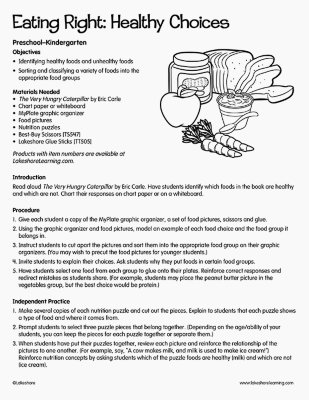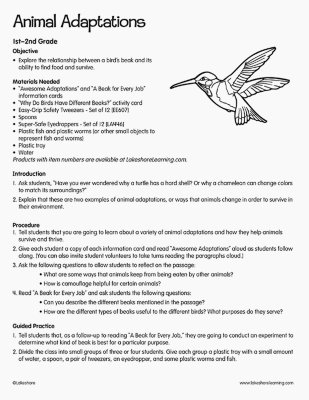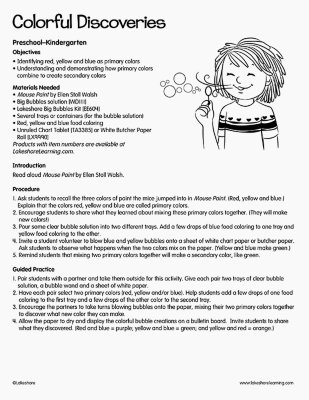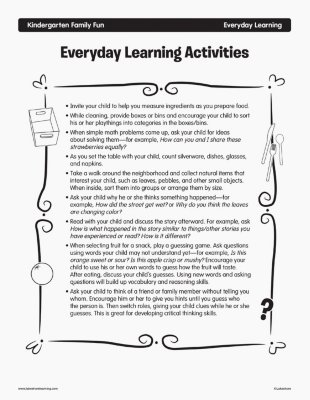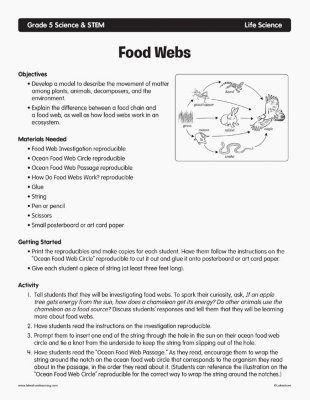
Objectives
Objectives Identifying red, yellow and blue as primary colors Understanding and demonstrating how primary colors combine to create secondary colors Materials Needed Mouse Paint by Ellen Stoll Walsh Big Bubbles solution Lakeshore Big Bubbles Kit Several trays or containers (for the bubble solution) Red, yellow and blue food coloring Unruled Chart Tablet or White Butcher Paper Roll Introduction Read aloud Mouse Paint by Ellen Stoll Walsh.
View Lesson PlanInvite your child to help you measure ingredients as you prepare food.
View Lesson Plan

